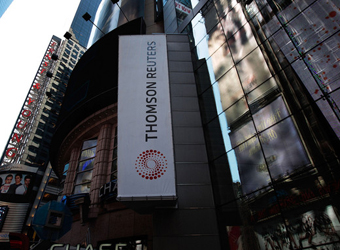Reuters has developed a tool capable of automatically detecting and verifying breaking news on Twitter, in an attempt to report on events more rapidly and accurately. The tool, known as Reuters News Tracer, has been developed over the past two years, but Reuters only made it public this week, in interviews with the Columbia Journalism Review and Nieman Lab.
News Tracer analyzes tweets in real-time, filtering out spam and grouping similar tweets into “clusters” based on similar words. The tool then classifies the clusters into topics and generates short summaries about each one. Tweets with the words “bomb” or “explosion,” for example, might be grouped under a terrorist attack cluster.
The idea, according to Reg Chua, Reuters’ executive editor of data and innovation, is to help automate the news gathering process. “A large part of our DNA is built on the notion of being first, so we wanted to figure out how to build systems that would give us an edge on tracking this stuff at speed and at scale,” Chua tells Nieman Lab. “You can throw a million humans at this stuff, but it wouldn’t solve the problem.”
The algorithm also helps verify breaking news by assigning a credibility score to each cluster, based on a range of factors: the location and identity of the person tweeting, how the tweet spreads, and whether the information is being confirmed or debunked on Twitter. As Nieman Lab notes, “Reuters essentially taught its algorithm to think like a reporter.”
Other newsrooms have explored different forms of automation. Last year, the Associated Press began using algorithms to write full stories, with a tool called Automatic Insights. The French newspaper Le Monde is also working on a browser extension that will automatically flag fake or misleading news — something that Facebook has been notoriously reluctant to address.
Source: The Verge



